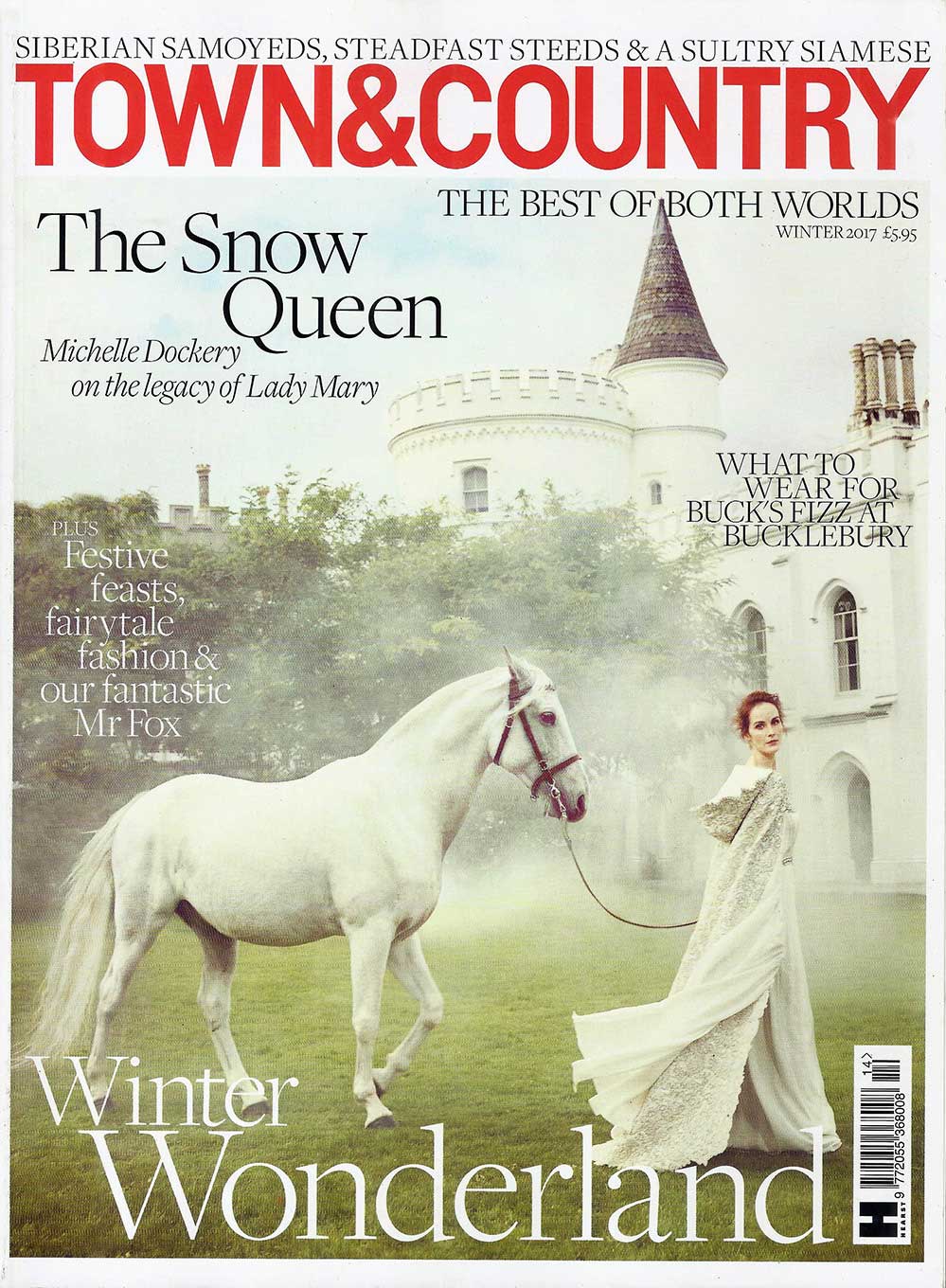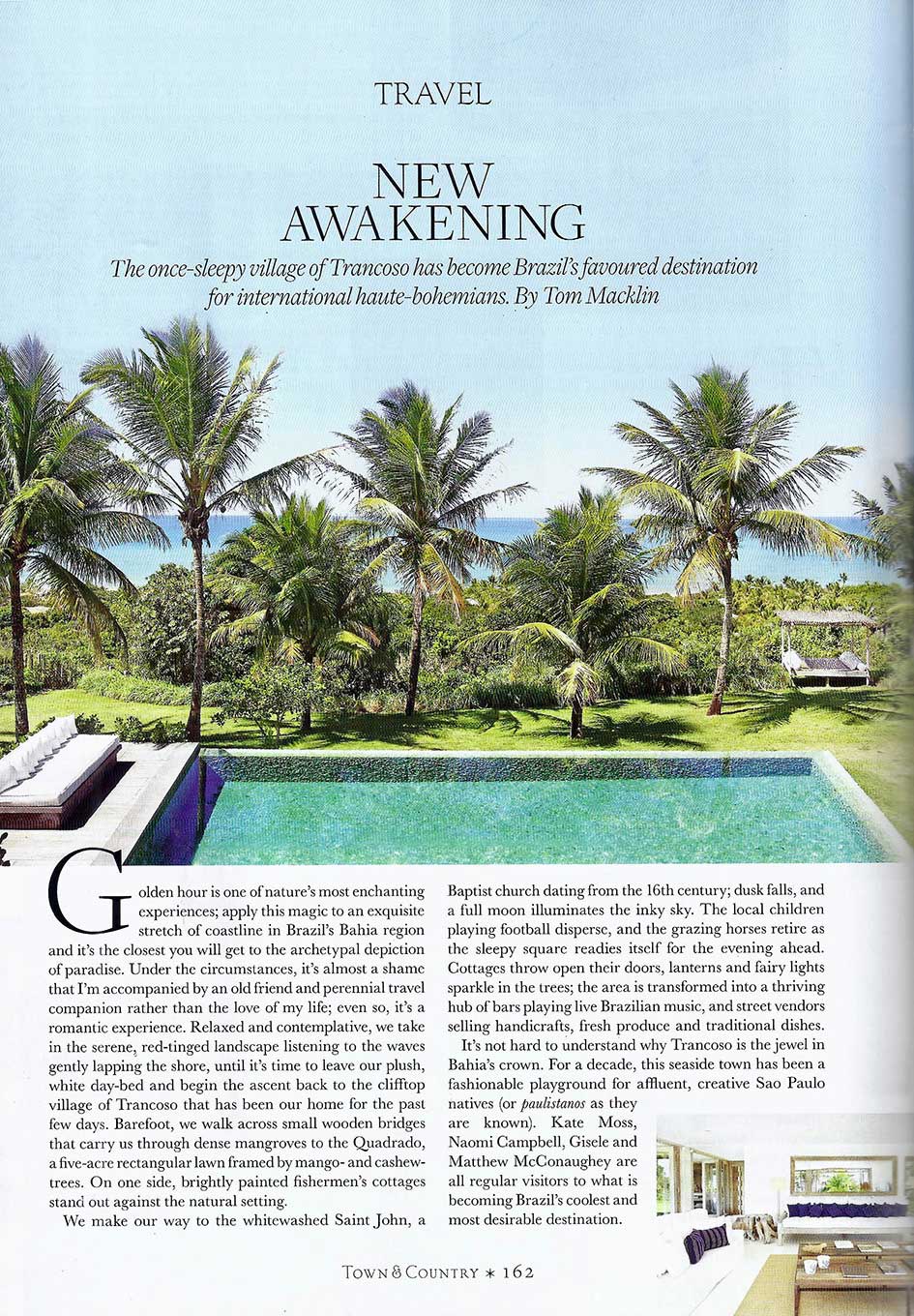NEW AWAKENING
The once-sleepy village of Trancoso has become Brazil’s favoured destination for international haute-bohemians.
Golden hour is one of nature’s most enchanting experiences; apply this magic to an exquisite stretch of coastline in Brazil’s Bahia region and it’s the closest you will get to the archetypal depiction of paradise. Under the circumstances, it’s almost a shame that I’m accompanied by an old friend and perennial travel companion rather than the love of my life; even so, it’s a romantic experience. Relaxed and contemplative, we take in the serene, red-tinged landscape listening to the waves gently lapping the shore, until it’s time to leave our plush, white day-bed and begin the ascent back to the clifftop village of Trancoso that has been our home for the past few days. Barefoot, we walk across small wooden bridges that carry us through dense mangroves to the Quadrado, a five-acre rectangular lawn framed by mango- and cashew- trees. On one side, brightly painted fishermen’s cottages stand out against the natural setting. We make our way to the whitewashed Saint John, a Baptist church dating from the 16th century; dusk falls, and a full moon illuminates the inky sky. The local children playing football disperse, and the grazing horses retire as the sleepy square readies itself for the evening ahead. Cottages throw open their doors, lanterns and fairy lights sparkle in the trees; the area is transformed into a thriving hub of bars playing live Brazilian music, and street vendors selling handicrafts, fresh produce and traditional dishes. It’s not hard to understand why Trancoso is the jewel in Bahia’s crown. For a decade, this seaside town has been a fashionable playground for amuent, creative Sao Paulo natives (or Paulistanos as they are known). Kate Moss, Naomi Campbell, Gisele and Matthew McConaughey are all regular visitors to what is becoming Brazil’s coolest and most desirable destination.
Trancoso’s beginnings are rather poetic. Almost a century after the Portuguese explorer Pedro Alvares Cabral and his India Armada discovered South America’s biggest country (they first docked about 20 miles north in Porto Seguro), a group of Jesuit priests cleared an area of jungle on a hillside overlooking the Atlantic and founded a settlement, Sao Joao Batista dos Indios. Remarkably, for 400 years the village remained an isolated and forgotten fishing area. By 1978 it had a population of just 50 families, and could only be reached via the beach at low tide. Then a group of wealthy hippie Paulistanos stumbled upon it and began to purchase land. Subsequently, the town acquired electricity in 1982, followed by a highway linking it to nearby Porto Seguro and its airport in 2000. Tourism can often be the downfall of such a place, but in this instance the locals and the tourists have worked passionately together to revive a lost community. As a result, its spirit is alive and flourishing, without losing that rare charm of a preserved town from a bygone era. The skyline remains untouched and there are no high-rises or major hotel chains, although plans to open a development of 40 bungalows and 23 villas by the notable Brazilian hotel group Fasano are in the works for 2018. This is predominantly a place where visitors live side by side with locals, in a host of villas and B&Bs that surround the area. We chose to stay in Villa Altos, a beautiful detached home encircled by lush vegetation on the hilltop above Nativos beach, and boasting a talented resident chef, Jany, who prepares delicious Bahian food. Its airy and open-plan interior all made from locally sourced materials — reflects the essence of Trancoso’s stylish, bohemian vibe. Vast walls of glass extend the ground floor, blurring boundaries between inside and out. The palm-fringed lawn borders a magnificent pool decorated in Brazilian green quartz stones. Add to this outdoor showers, a Japanese hot tub and a shady pergola- covered day-bed perched on the edge of the hill, and it’s hard to find an excuse to leave. However, there are plenty: a five-minute walk away you’ll come across the Pousada Estrela D’Agua beach club, formerly the holiday home of the Brazilian singer Gal Costa, one of the original Trancoso trailblazers. Inside, the Praia dos Nativos restaurant is the perfect place for a lazy afternoon lunch; you can surf with an instructor or hire a horse for a trek along the coast or in the forest. Venture 20 minutes by car and you’ll discover Praia do Espelho, one of the most alluring beaches in the area. The clear sea forms natural pools for swimming, and there are numer- ous bars, ateliers and a village, Itaporanga, lined with colourful houses. The beach clubs (we loved the sushi at Mel’s) have a leisurely feel, with guests sipping cocktails until sunset. No one is ever in a rush here. On our last night, we slowly make our way home from the Quadrado via a dirt road, which cuts through the jungle, full of regret that this is our final evening in this special place. Jany has prepared fresh, just-caught badejo fish in a rich, fragrant Brazilian sauce; afterwards, we make our way outside with caipirinhas in hand, taking one parting look out beyond the palms and down on to the beach below. Let’s raise a toast, we say, to Trancoso; long may she maintain her unique appeal for many moons to come.




